10 Fun Facts about UK Frogs
1. There are 5 species of frogs found in the UK
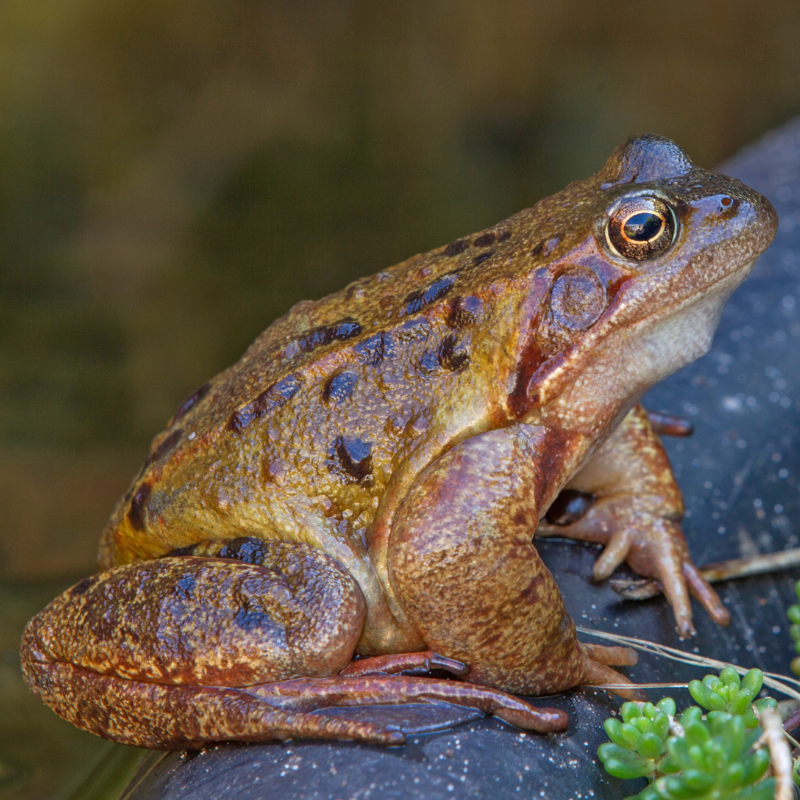
Common Frog (Rana temporaria)
The common frog is the most widespread amphibian in the UK and the one you'll most likely find in your garden. It has smooth skin, ranging from olive green to brown, with irregular dark markings. Common frogs are found in various habitats, including gardens, woodlands, and wetlands.
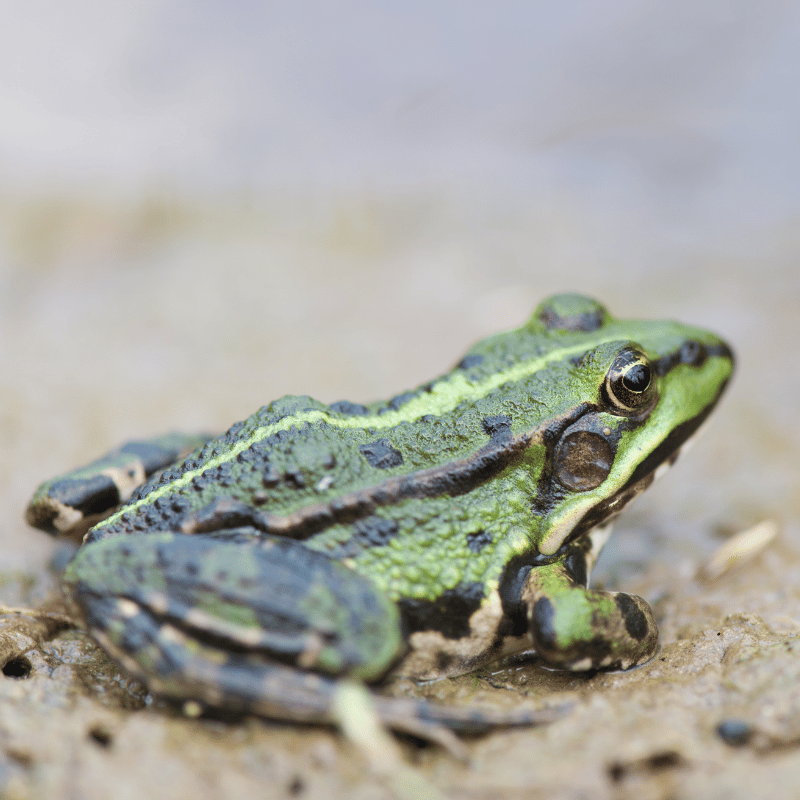
Pool Frog (Pelophylax lessonae)
The pool frog is one of the rarest amphibians in the UK and is limited to a few sites in East Anglia. It has greenish-brown skin with darker spots and a distinctive pale stripe along its back. Pool frogs prefer shallow, sunny ponds with plenty of vegetation.
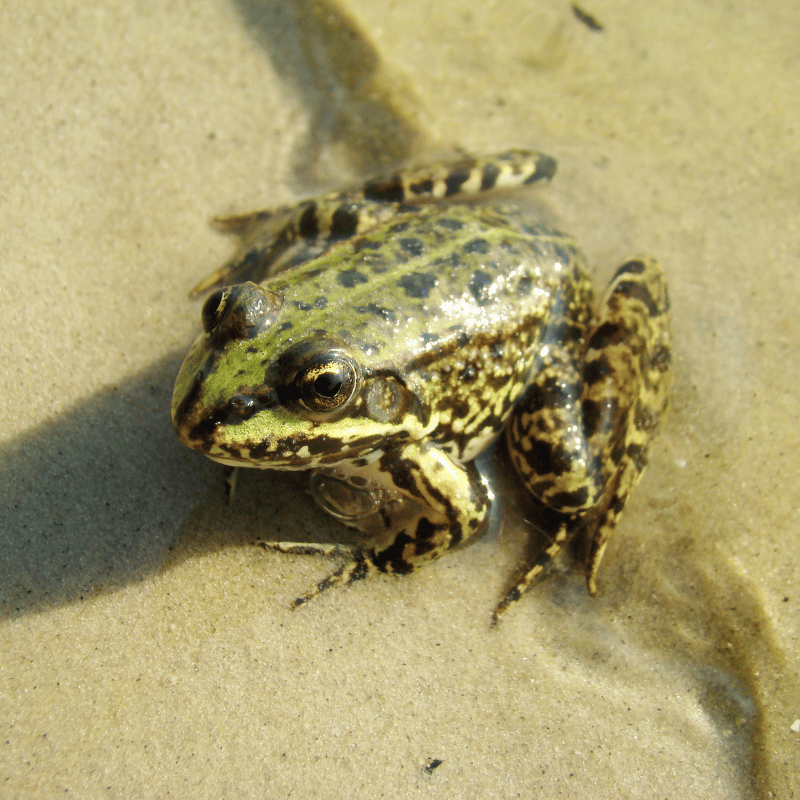
Edible Frog (Pelophylax kl. esculentus)
The edible frog is a hybrid species resulting from the interbreeding of pool frogs and marsh frogs. It has variable colouration, ranging from green to brown, with dark markings and a pale stripe along the back. Edible frogs are found in ponds and lakes, particularly in southern England.
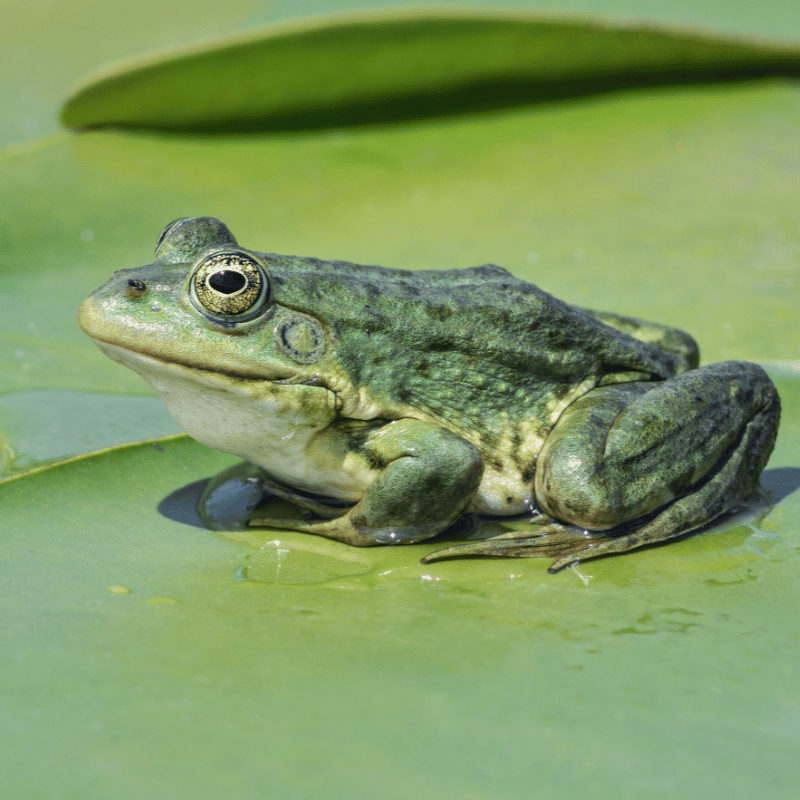
Marsh Frog (Pelophylax ridibundus)
The marsh frog is larger than the common frog, with bright green skin and dark markings. It has a distinctive call resembling laughter, which can be heard in spring and summer. Marsh frogs inhabit marshes, ponds, and slow-moving rivers.
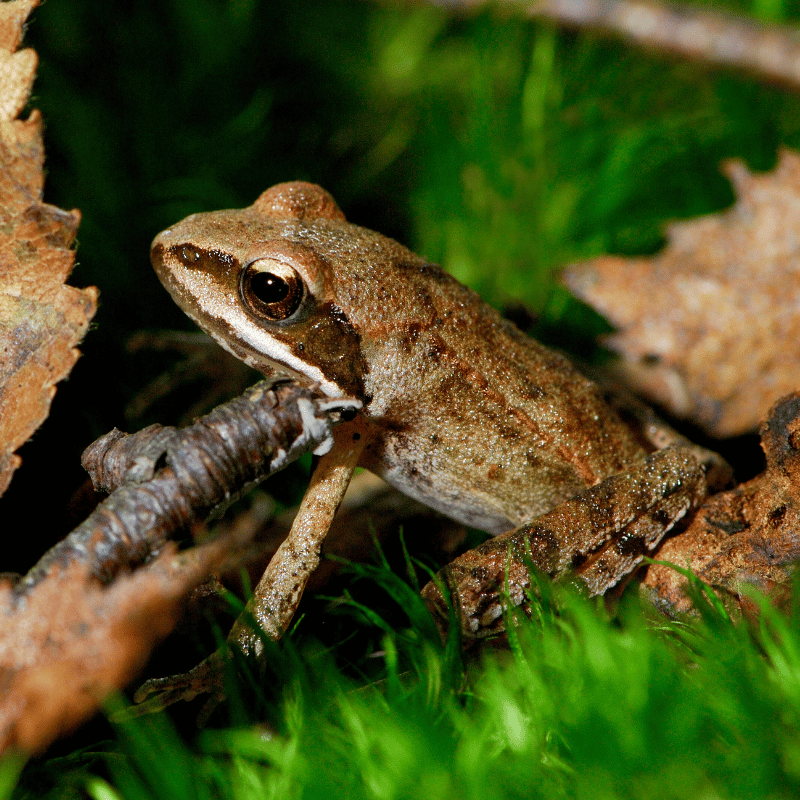
Agile Frog (Rana dalmatina)
The agile frog is a small, slender species with smooth skin and a light brown or grey colouration. It has a series of dark markings on its back and legs. Jersey is the only location you can find Agile frogs in the British Isles, and they prefer to be in grasslands, meadows, and open woodlands.
2. You don't need a pond in the garden to attract frogs
While having a pond in your garden can certainly increase the likelihood of attracting frogs, it's not strictly necessary. Providing alternative water sources, such as shallow dishes or bird baths filled with water, can attract frogs. These can be placed in shaded areas to prevent overheating. You can learn other helpful tips on how to attract frogs to your garden here.
3. Frogs are fantastic garden pest controllers
Frogs primarily feed on a diet of pesky insects such as mosquitoes, flies, and caterpillars, as well as other pests like slugs and snails. By consuming these pests, frogs help to keep their populations in check, reducing the damage they can cause in gardens to plants and flowers.
4. Frogs hibernate during the winter
As ectothermic animals, their activity levels are influenced by temperature, and during the colder months, when temperatures drop, frogs enter a state of dormancy known as hibernation. They typically seek out sheltered locations such as under logs, leaf litter, or artificial habitats where they can remain relatively insulated from the cold. Hibernation allows frogs to conserve energy and survive through the winter when food sources become scarce, and temperatures are too low for normal activity. Frogs typically emerge from hibernation in the spring as temperatures rise and resume their normal activities, including breeding and foraging for food.
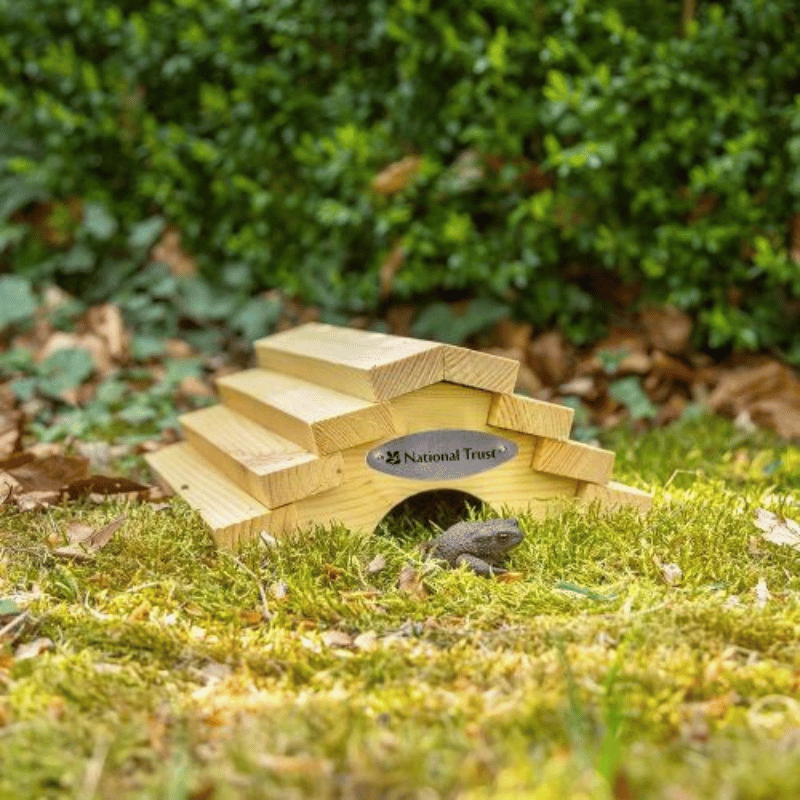
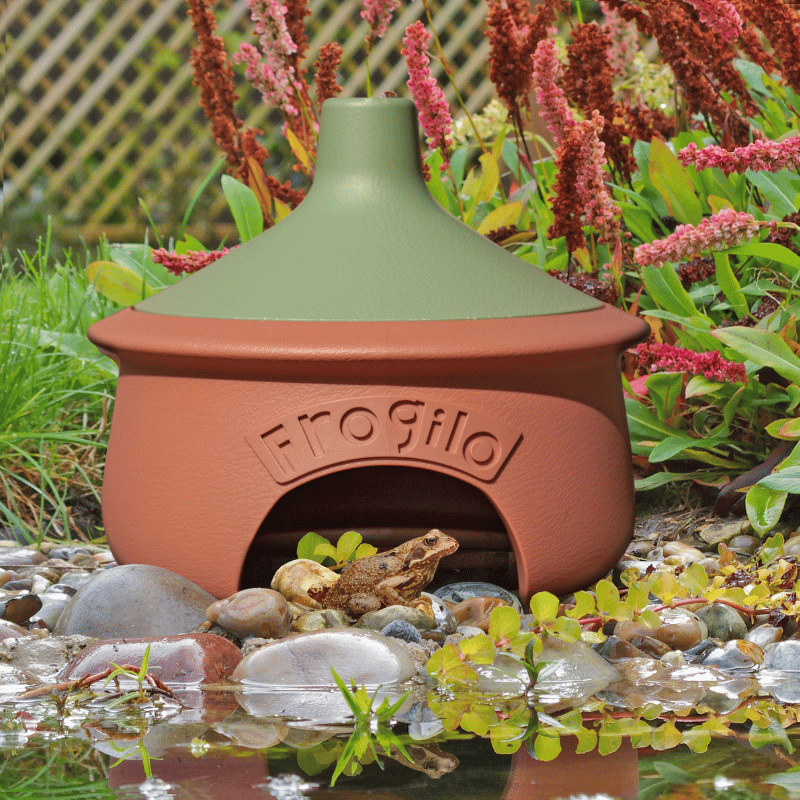
5. Frogs will often return to the same pool they were born in
Frogs typically reach breeding age between two and three years old. They often return to the pond of their birth, where males and females find a partner to mate with. So if you are successful in attracting frogs to your garden and they lay their eggs, it’s likely their offspring will hang around and return in future after hibernation.
6. Frogs mate through a process called amplexus
During the breeding season, male frogs emit calls to attract females. Each species has a distinct mating call, which helps females locate suitable mates. Once a female responds to the male's call, courtship rituals may occur, where the male actively pursues the female. When the male encounters a receptive female, he climbs onto her back and grasps her behind the forelegs in a behaviour called amplexus. This is a critical stage in the frog mating process, ensuring successful fertilisation of the eggs and contributing to the survival of the species. As the female releases her eggs, the male simultaneously releases sperm, fertilising the eggs. The eggs are typically laid in water or moist environments, where they will develop into tadpoles.
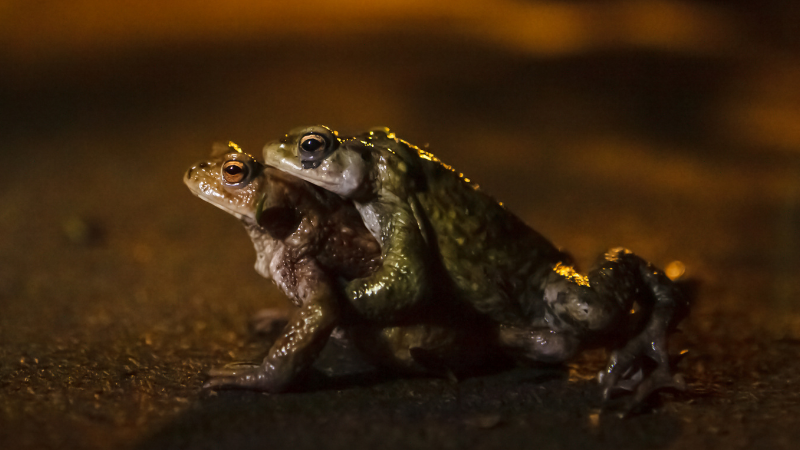
7. Multiple frog males can fertilise a single female's eggs
During the mating process of frogs, multiple males may engage in amplexus with a single female simultaneously or sequentially. As the female releases her eggs into the water, multiple males release their sperm, resulting in the possibility of multiple males fertilising a single female's eggs.
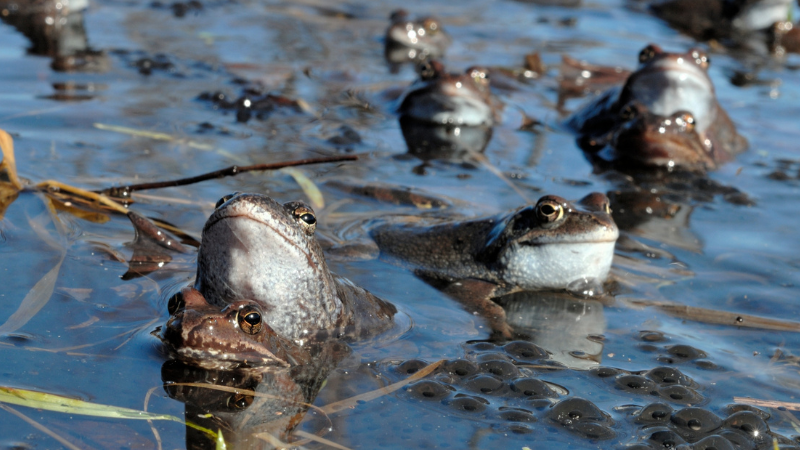
8. The Common Frog can lay up to 5000 eggs
The number of eggs can vary depending on each species, but the Common Frog takes the crown for the UK frog that lays the most eggs, with up to 5000 eggs!
9. Frogspawn is made up of 99.7% water
Frogspawn is the gelatinous mass of eggs laid by female frogs during the breeding season. It consists of numerous individual eggs encased in a protective jelly-like substance. Each egg contains a developing tadpole, identifiable by a small black dot at its centre. Frogspawn is often found in clusters or masses, attached to submerged vegetation or floating on the surface of ponds. Upon immersion in the pond, the eggs swiftly absorb water, expanding to their full size. Consequently, frogspawn consists of 99.7% water content, rendering it transparent. The eggs will then undergo development until the tadpoles hatch and begin their life cycle.
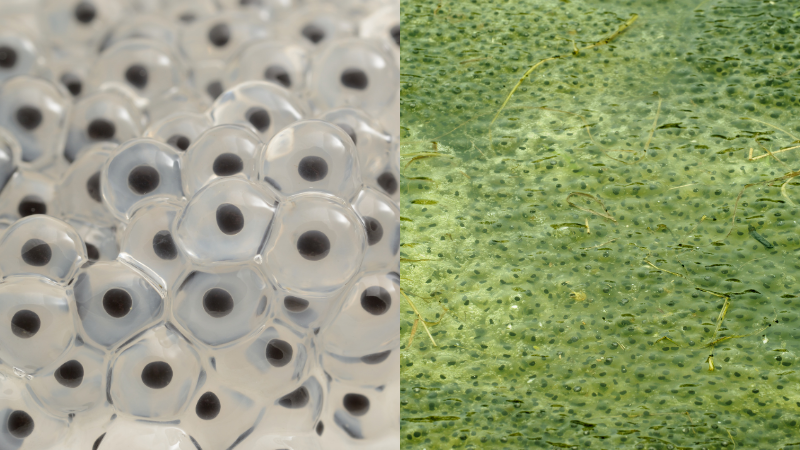
10. Frogs have a unique method of breathing through their skin
While they do possess lungs and breathe through them, frogs also have specialised skin that allows them to absorb oxygen directly from the surrounding water or damp environments. This adaptation helps them to stay submerged for extended periods and contributes to their ability to thrive in diverse habitats.

